How to get rid of Japanese beetles: 5 ways to protect your plot from these bugs
We've got the lowdown on how to get rid of Japanese beetles to stop these pests from destroying your plants
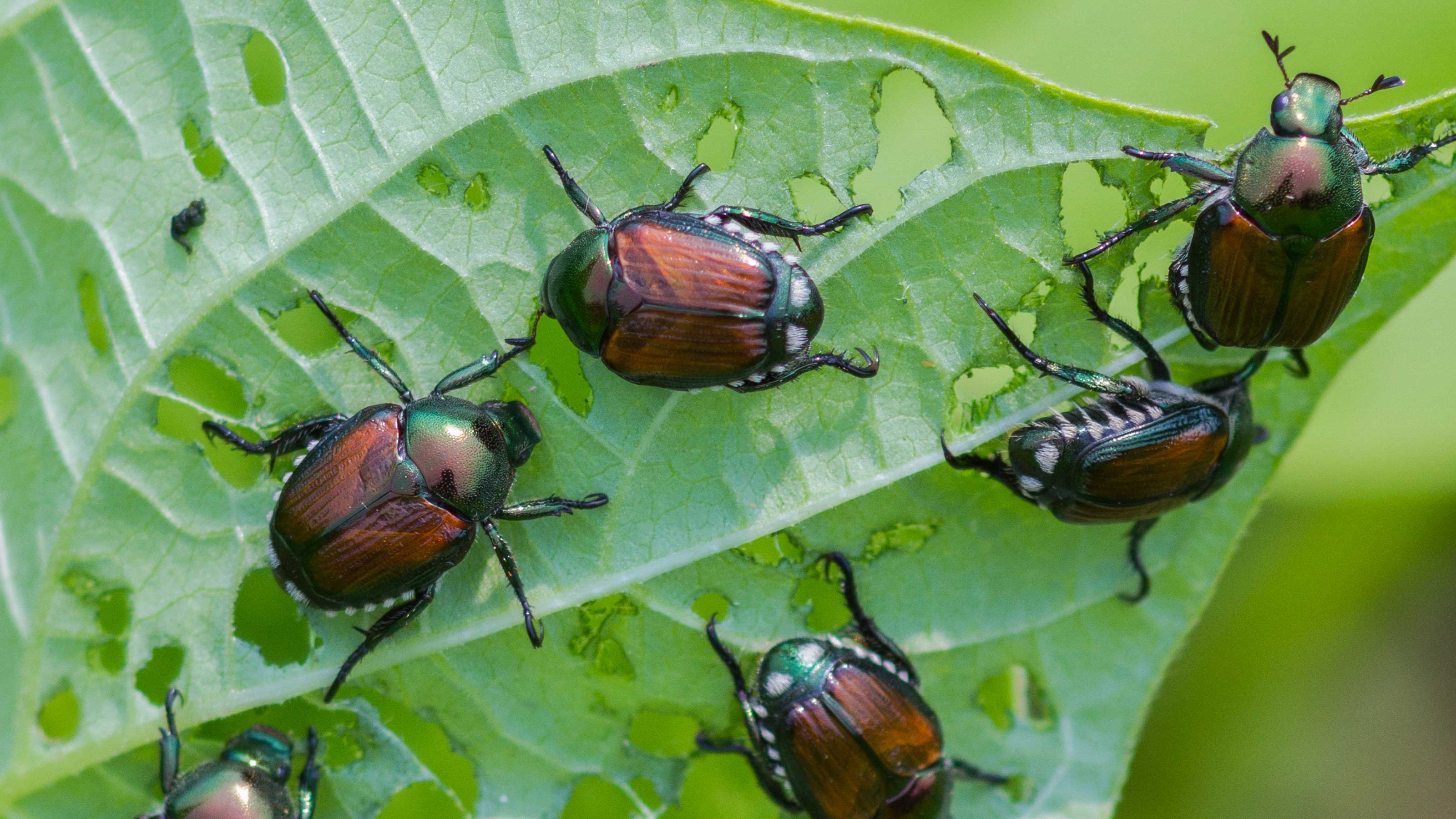

Anna K. Cottrell
Early summer is the best time to learn how to get rid of Japanese beetles in your yard, before they get out of hand. And we're here to help.
These bugs arrived in the US from Japan in the 1910s, allegedly in a shipment of irises, according to Pests.org. Since then, they have spread to become a problematic garden pest across all 50 states.
Members of the scarab beetle family, they are characterized by their shiny copper bodies and green heads. The grubs overwinter in the ground, feeding on turf roots and encouraging further damage from digging by raccoons and other animals. If your lawn is looking patchy with unhealthy brown spots, Japanese beetles may be to blame (and our guide on how to get rid of lawn grubs might help).
The adult beetles then emerge when the temperatures rise, and descend in groups on a huge range of plants. The reason they are so harmful is that they decimate whole plants very quickly, often in a matter of days. Anyone who has seen their rose bushes reduced to skeletons will know the woes that these little insects can cause.
Keep your flower beds and containers looking their best with these tips on how to get rid of Japanese beetles
From getting rid of ants to getting rid of slugs, where there's a will, there's a way. So if Japanese beetles are causing chaos in your plot, these tips can help.
1. Pick them off your plants
A severe Japanese beetle infestation can be particularly tricky to eliminate. Even if you tackle the ones in your own lawn, 'it will not control the thousands of other grubs in neighboring lawns,' as Eric Barrett, The Ohio State University Extension educator for agriculture and natural resources, told the Tribune Chronicle. This means they will still prove to be a problem for your plants.
So, what do you do? Eric explains the best approach is to try to catch them early on. In the US, this tends to be around the 4th of July, but it can be earlier in warmer states.
'When they emerge as adults this summer, plan to get the first beetles (the scouts) and eliminate them,' he says.
As Pests.org explains, these pests won't bite and move quite slowly, so it's relatively easy to pick them off your precious plants by hand as soon as you spot them. Put them in a bucket of soapy water, which will drown them.
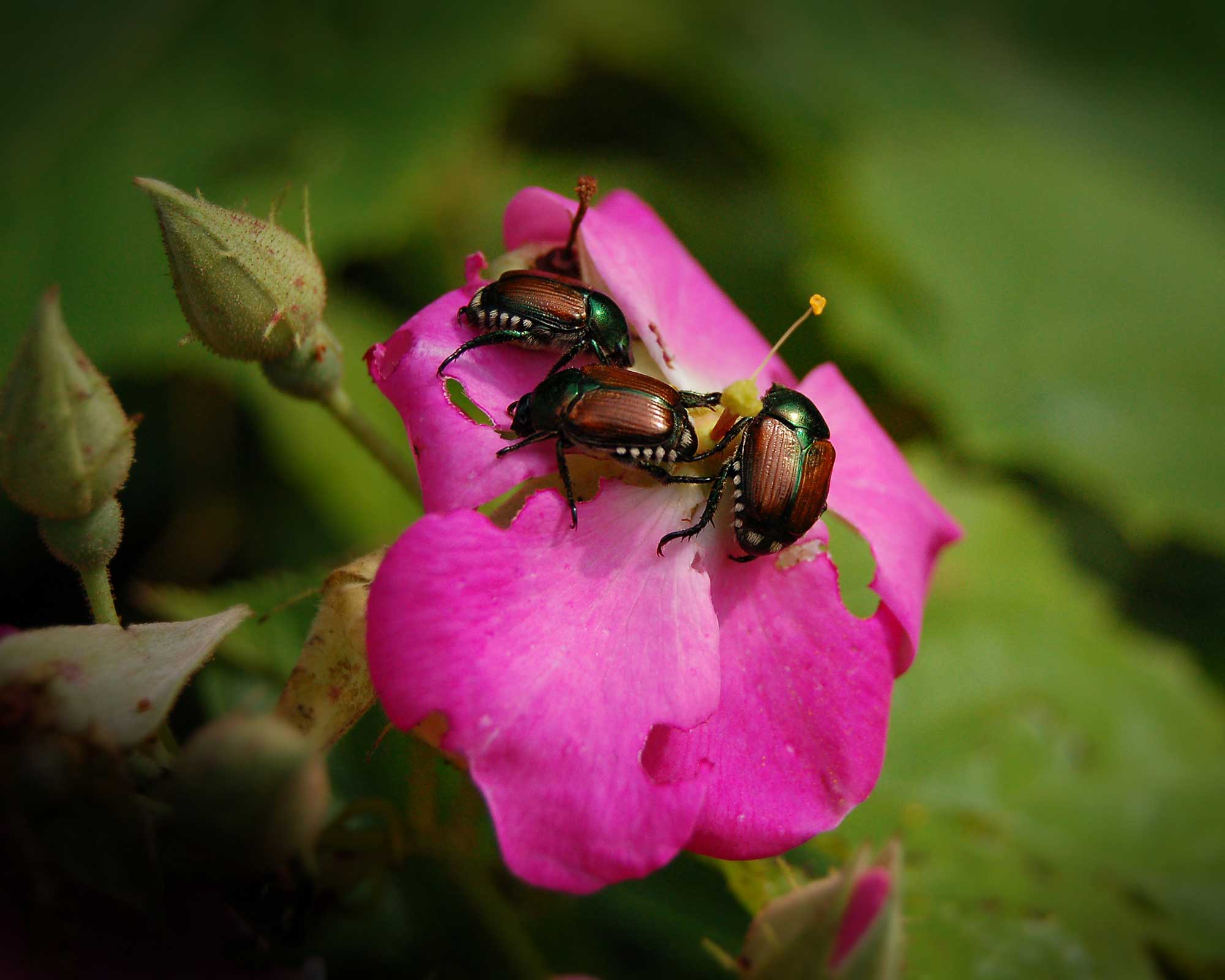
Japanese beetles can be easily spotted
2. Spray affected plants with a soapy solution
Alternatively, Pests.org suggests mixing a quart of water with a teaspoon of dish soap, then spraying affected plants with the solution. Use a non-scented, gentle soap, and do a test first, to ensure it doesn't cause unwanted damage to your flowers and foliage.
This method can also come in handy for getting rid of stink bugs – another type of beetle that can be a pain for gardeners.

This DIY spray can get rid of these pests
3. Keep them away with strong scents
Lots of pests can be deterred by certain strong-smelling plants, such as herbs.
Pests.org explains how Japanese beetles are particularly deterred by the scent of garlic and other alliums. So, try surrounding your more vulnerable plants with these to keep them protected. This can also be effective if you're looking for tips on how to get rid of aphids.
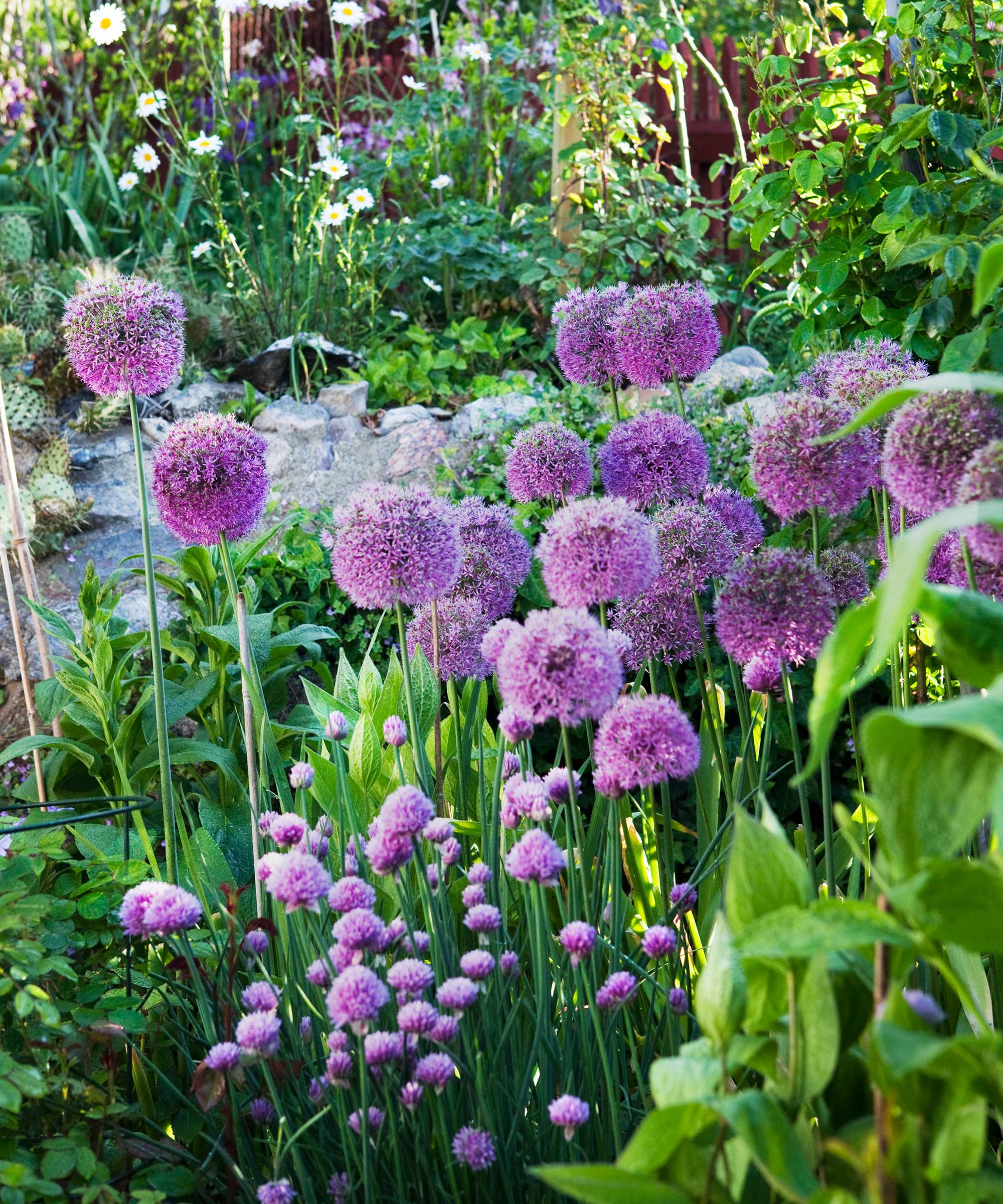
Chives and other alliums are known to deter Japanese beetles, and they look pretty, too
4. Opt for a pesticide
For quick results, you may wish to use an insecticide to battle your resident Japanese beetles.
Look for ones that specifically list Japanese beetles on the label, but are safe for beneficial pollinators. Apply it to your plants as soon as you see the beetles, following the packet instructions carefully.
For organic gardening, organic products such as neem oil can also be used, but again, be sure to apply it following the label for safety.
You can also buy Japanese beetle traps (try Amazon), which lure them in with a scent. Place them at least 10 feet away from your plants to help protect them.
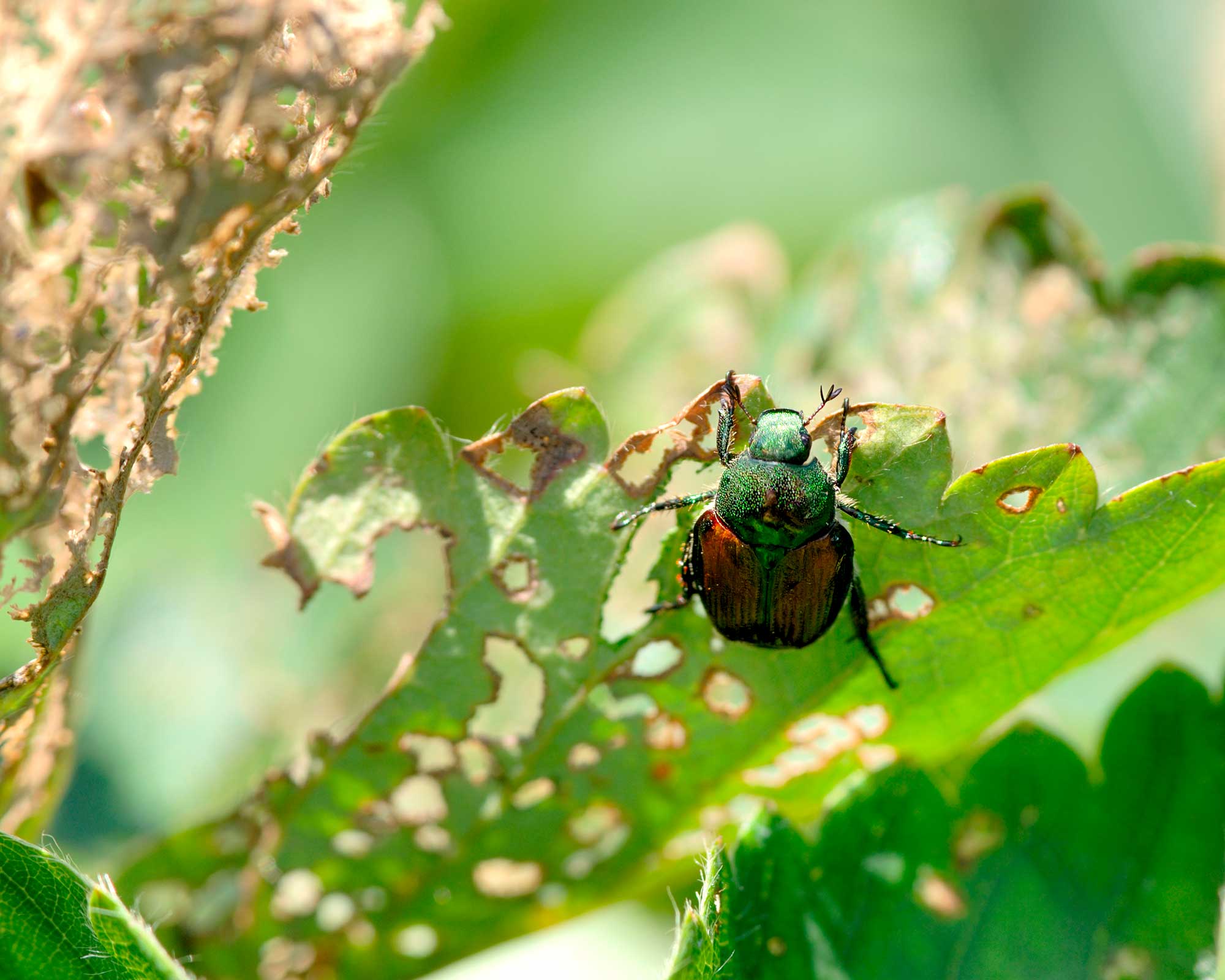
Japanese beetles will quickly destroy plants
5. Cover your plants
Protecting your plants with row covers or a lightweight garden fabric can also keep them safe from these pests during their peak feeding season of mid-to-late summer.
The covers will still let in light and moisture, meaning your plants will continue to grow. What's more, they are useful at keeping other pests out, including carrot flies and leaf miners.
And when the seasons start to change again, don't forget that covers can also help protect plants from frost (although you may wish to switch to slightly thicker ones).
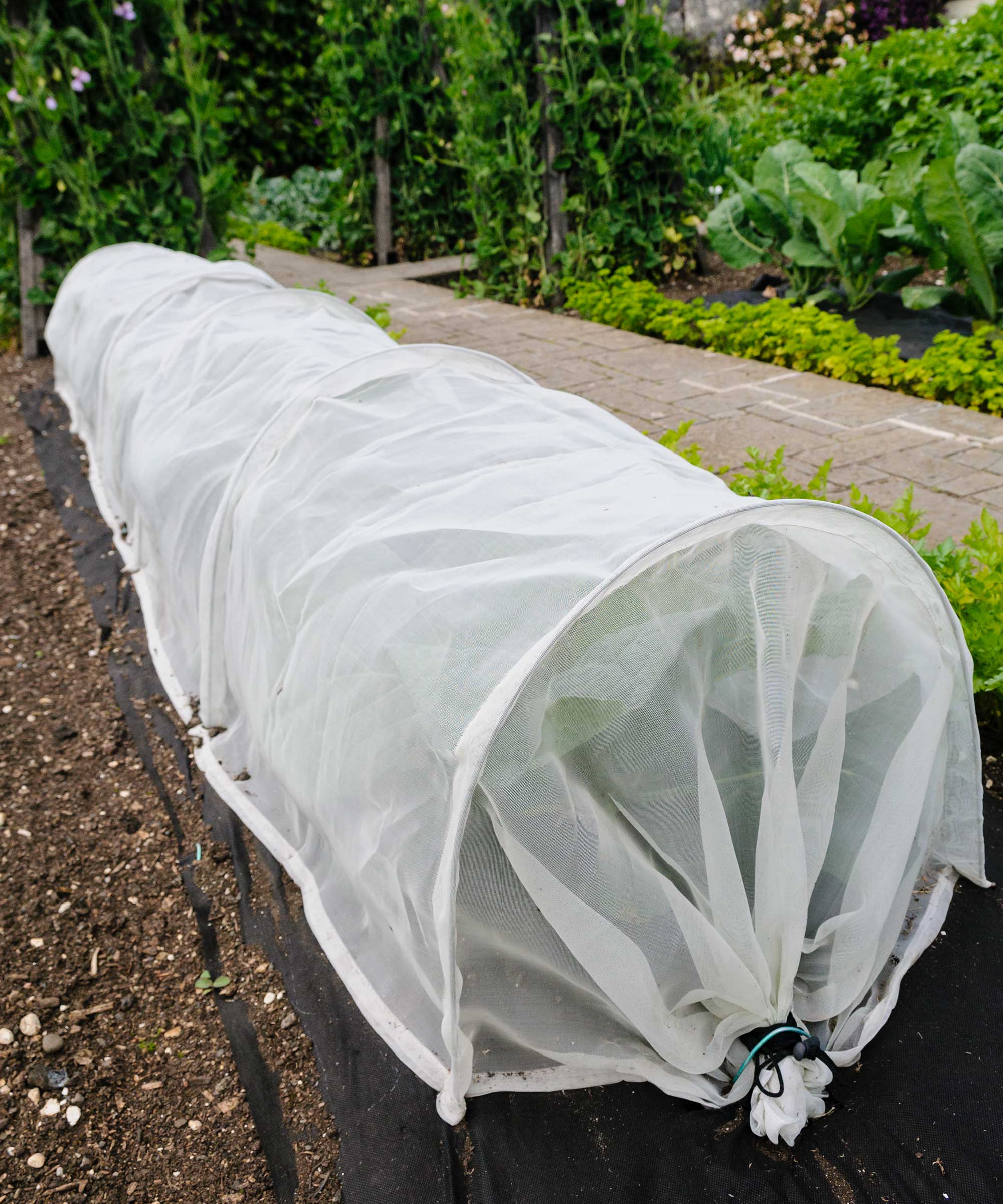
Stop bugs from attacking your precious crops
What plants do Japanese beetles attack?
Japanese beetles aren't fussy, happily eating hundreds of species of plants.
In terms of flowers, they are known to be attracted to sweetly-fragranced varieties, such as roses and lilacs. But if you like to grow your own crops in your yard, keep an eye on your raised garden beds, too. Japanese beetles love to feast on all kinds of veggies and fruit, including raspberries, asparagus, and tomatoes.
Even some trees aren't safe from these pests – cherries, maples, and birches to name a few. However, oak and evergreen trees are less vulnerable, says Pests.org.

The garden was always a big part of Holly's life growing up, as was the surrounding New Forest where she lived. Her appreciation for the great outdoors has only grown since then. She's been an allotment keeper, a professional gardener, and a botanical illustrator – plants are her passion.
